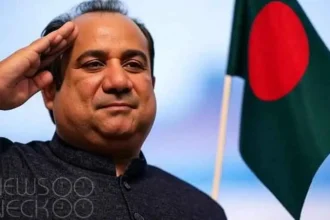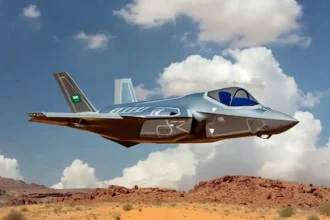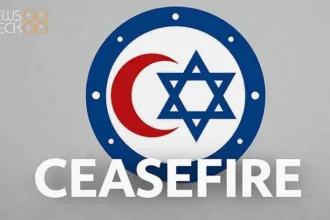A Fragile Peace: What Happens After the Guns Fall Silent in Gaza?
There is a moment in every prolonged conflict when the air itself seems to change. The relentless percussion of explosions gives way to an unfamiliar quiet. For the first time in two years, that quiet has descended upon the Gaza Strip. A US-brokered ceasefire, which took effect on October 10, 2025, is holding, marking a potential turning point in a war that has killed tens of thousands and displaced nearly an entire population.
The most visible sign of this fragile new reality came on Monday, when Hamas released the 20 remaining living Israeli hostages it had held in Gaza for more than two years. In exchange, Israel began the process of releasing nearly 2,000 Palestinian prisoners and detainees. This exchange is the heart of the first phase of a peace plan championed by the US, a tentative first step toward ending the bloodshed.
Yet, within this moment of hope, the deep-seated tensions that have fueled this war for two years remain entirely unresolved. The release of the living hostages, while a profound relief, was immediately clouded by a new dispute. While the ceasefire agreement stipulated the return of the remains of all 28 deceased hostages, Hamas has so far only committed to returning four, leaving 24 families in anguished limbo. An Israeli official has stated that an international task force may now be necessary to locate the remains, a grim reminder of the war’s brutality and the difficulties of implementation.
The Summit and the Absentees
As the physical exchange unfolded on the ground, the diplomatic maneuvering shifted to the polished tables of the Sharm el-Sheikh “Summit for Peace” in Egypt. Co-chaired by U.S. President Donald Trump and Egyptian President Abdel Fattah el-Sisi, the gathering brought together leaders from over twenty nations, including the UK, France, Qatar, and Jordan. Their stated aim was monumental: to “end the war in the Gaza Strip and usher in a new page of peace and regional stability”.
But the summit’s impressive guest list highlighted a critical void. The two main actors in the drama were notably absent. Israeli Prime Minister Benjamin Netanyahu declined to attend, and no representatives from Hamas were present. A Hamas political bureau member stated the group “will not be involved” directly, having acted “principally through Qatari and Egyptian mediators” throughout the talks. This absence underscores a fundamental truth: while world leaders can build a framework for peace, the most difficult compromises must still be made by those who are not in the room.
The Unresolved War Over the “Day After”
The ceasefire has paused the fighting, but the battle over Gaza’s future is just beginning. The US peace plan envisions a Gaza that is demilitarized, with Hamas playing no role in its future governance. The plan proposes a temporary transitional committee of Palestinian technocrats, supervised by an international board, with the eventual goal of handing over governance to a reformed Palestinian Authority.
However, this vision clashes directly with the stated position of Hamas. Senior Hamas officials have publicly and repeatedly stated that surrendering their weapons is “out of the question and not negotiable”. The group believes that disarming would be tantamount to surrender and has previously said it would only consider laying down its arms after a sovereign Palestinian state is established. This creates a seemingly impossible standoff. As one analysis put it, Hamas sees the demand for disarmament as “designed to finish Hamas, whether the group accepts it or not”.
You might Like it: Israel-Gaza Peace Talks on Two-year War Anniversary
The table below outlines the key points of contention that threaten the fragile ceasefire:
| The Sticking Point | The US/Israeli Position | The Hamas Position |
|---|---|---|
| Disarmament | Hamas must disarm and have no future role in governing Gaza. | Surrendering weapons is “out of the question and not negotiable”. |
| Post-War Governance | Governance to be handed to a temporary committee, then a reformed Palestinian Authority. | Hamas expects a future role as part of a “unified Palestinian movement”. |
| Israeli Withdrawal | Phased withdrawals, but a “security perimeter” would remain until the threat is gone. | Has historically demanded a full Israeli withdrawal as a precondition. |
| International Forces | Deployment of a “temporary International Stabilisation Force” to Gaza. | Views an international force as a new form of occupation. |
A Long Road from Ceasefire to Peace
Beyond the political impasse lies a reality of almost unimaginable destruction. Experts estimate that rebuilding Gaza could cost between $53 billion and $70 billion. The task is Herculean: over 50 million tons of rubble need to be cleared, a process that could take up to 20 years alone. With 92% of homes damaged or destroyed, the housing sector is the most devastated, requiring an estimated $15.2 billion to rebuild. The social fabric is equally torn, with the war setting back Gaza’s human development by an estimated 69 years.
The ceasefire, therefore, is not an end. It is a pause, a breath taken between two years of horrific violence and the daunting, uncertain work of building something lasting in its place. The release of hostages and prisoners is a humanitarian victory, but it does not solve the political problems that sparked this war. The guns are quiet for now, but the fundamental questions of power, security, and justice remain. The world is watching to see if this pause becomes a bridge to a stable peace, or merely an intermission before the next tragic chapter.
Author: Azhar mehmood
Date: 13 Oct, 2025
For More Updates, Visit Newsneck













